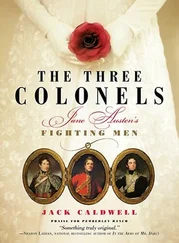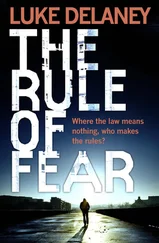But if Charlie and I feared that we were losing our two friends, then we were reassured soon enough. At the end of junior year, it was Gil who suggested that the four of us live together as seniors, a decision that meant he was willing to give up living in the President's Room at Ivy to keep us as his roommates on campus. Paul immediately agreed. And so, with a mediocre draw at the housing lottery, we found ourselves in a quad at the north end of Dod. Charlie argued that a fourth-floor room would force us to get more exercise, but convenience and good sense prevailed, and the ground-floor suite, well furnished thanks to Gil, became home for our final year at Princeton.
Now, as Gil, Paul, and I reach the courtyard between the university chapel and the lecture hall, we're greeted by a strange sight. More than a dozen open-air canopies have been set up in the snow, each with a long table of food beneath it. I know immediately what it means; I just can't believe it. The lecture organizers intend to serve refreshments outside.
Like a country carnival just before a hurricane, the tables are completely deserted. The ground beneath the canopies is choppy with mud and tufts of grass. Snow is creeping in from the edges, and in the hectic wind the white tablecloths flutter uneasily, anchored by large dispensers of what will soon be hot chocolate or coffee, and by cold platters of cookies and petits fours in cocoons of plastic wrap. It cuts a peculiar image in the silent courtyard, like a city extinguished in midmotion by a calamity, a makeshift Pompeii.
You've got to be kidding, Gil says as we park. We get out of the car, and he starts toward the lecture hall, pausing to shake the support poles of the nearest tent. The whole structure trembles. Wait till Charlie sees this.
On cue, Charlie appears at the door of the lecture hall. For some reason he's preparing to leave.
Hey, Chuck, I call out as we approach, gesturing at the courtyard. How do you like all this?
But Charlie has other things on his mind.
How was I supposed to get into the auditorium? he snaps at Gil. You idiots put some girl at the entrance, and she won't let me through.
Gil holds the door for the rest of us. He understands by idiots that Charlie is referring to Ivy. As cochairs of the biggest campus Christian group, three senior women at the club are coordinating the Easter ceremonies.
Loosen up, Gil says. They just thought Cottage might try some kind of prank. They're trying to nip it in the bud.
Charlie grabs himself expressively. Yeah, well, I almost told them to nip this in the bud.
Beautiful, I say, heading for the warmth of the lecture hall. My shoes are already soaked. Can we go inside?
At the landing, a sophomore with frosted blond hair and a skier's tan is sitting behind a long table, already shaking her head. When Gil arrives behind us at the top of the stairs, though, everything changes.
The sophomore looks sheepishly at Charlie. I didn't know you were with Gil… she begins.
From inside I can hear the voice of Professor Henderson from the comparative literature department, introducing Taft to the audience.
Forget it, Charlie says, walking past the table toward the entrance. The rest of us follow.
The auditorium is filled to capacity. All along the walls and toward the back of the hall by the entrance, those who couldn't find a seat are on their feet. I catch sight of Katie in a back row with another pair of Ivy sophomores, but before I can get her attention, Gil nudges me forward, searching for a place where the four of us can stand. He puts a finger over his lips and points toward the stage. Taft is walking to the podium.
The Good Friday lecture is a tradition with deep roots at Princeton, the first of three Easter celebrations that have become fixtures in the social lives of many students, Christian and non-Christian alike. By legend the events were introduced in the spring of 1758 by Jonathan Edwards, the fiery New England churchman who moonlighted as Princeton's third president. Edwards led the students in a sermon on the night of Good Friday, followed by a religious meal on Saturday evening, and a service at midnight as Easter Sunday began. Somehow these rituals were then transmitted intact down to the present, profiting from that immunity to time and fortune which the university, like an ancient tar pit, confers on everything that unwittingly lumbers into it and dies.
One of those things, as it happened, was Jonathan Edwards himself. Soon after arriving at Princeton, Edwards was given a potent smallpox inoculation, and within three months the old man had died from it. Notwithstanding the fact that he was probably too weak to have invented the ceremonies that have been attributed to him, though, university officials recreate all three of them, year after year, in what is euphemistically called a modern context.
I suspect Jonathan Edwards was never much for euphemisms or modern contexts. Considering that his most famous metaphor for human life involved a spider dangling above the pit of hell, hung there by a wrathful God, the old man must turn in his grave every spring. The Good Friday sermon is now nothing more than a lecture delivered by a member of the humanities faculty; the only thing mentioned less often than God in the lecture is hell. The original religious meal, which must have been stark and Calvinist in its conception, is now a banquet in the most beautiful of the undergraduate dining halls. And the midnight service, which I'm sure once made the walls tremble, is now a nondenominational celebration of faith, where not even the atheists and agnostics can feel out of place. Maybe for that reason, students of every background attend the Easter ceremonies, each for a different reason, and all of them depart happily, with their expectations reinforced and their sensitivities respected.
Taft stands at the podium, fat and shaggy as ever. Seeing him, I think of Procrustes, the mythological highwayman who tortured his victims by stretching them on a bed if they were too short, or cutting them down to size if they were too tall. Every time I look at the man I think of how misshapen he is, how his head is too big and his gut is too round, how the fat dangles from his arms as if the flesh were pulled from his bones. Still, there is an operatic quality to the figure he cuts onstage. In his wrinkled white dress shirt and worn tweed coat, he is larger than his own circumstances, a mind bulging at its human seams. Professor Henderson steps toward him, trying to adjust the microphone on his lapel, and Taft remains still, like a crocodile having its teeth cleaned by a bird. This is the giant at the top of Paul's beanstalk. Remembering the story of Epp Lang and the dog, I feel my stomach turn again.
By the time we find a pinch of standing room at the back of the auditorium, Taft has begun, and already it's far from the usual Good Friday drivel. He's delivering a slide show, and over the broad white projection screen comes a series of images, each more terrible than the last. Saints being tortured. Martyrs being slain. Taft is saying that faith is easier to give than life, but harder to take away. He has brought examples to make his point.
Saint Denis, he says, voice pulsing through the speakers mounted high overhead, was martyred by decapitation. According to legend, his corpse rose and carried his head away.
Above the lectern is a painting of a blindfolded man with his head on a block. The executioner is wielding an enormous ax.
Saint Quentin, he continues, advancing to the next image. Painted by Jacob Jordaens, 1650. He was stretched on the rack, then flogged. He prayed to God for strength, and survived, but was later put on trial as a sorcerer. He was racked and beaten, and his flesh was pierced with iron wires from the shoulders to the thighs. Iron nails were forced into his ringers, skull, and body. He was ultimately decapitated.
Читать дальше












